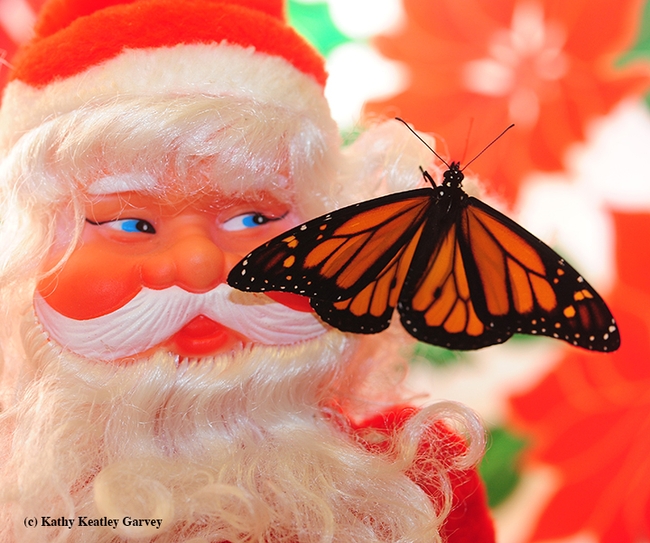
It didn't "look at all like chrysalis" this year in our pollinator garden in Vacaville, Calif. We spotted only one monarch--repeat, only one monarch--and it fluttered around and finally oviposited on our milkweed.
The eggs vanished. Maybe the lady beetles, aka ladybugs, feasted on them. Milkweed bugs, spiders, wasps, mantids, ants and other critters also prey on the eggs and neonate larvae. And then there are the parasitoids, such as tachinid flies. (See research article and a chart in Scientific Reports showing a diverse list of predators covering nine orders, from Dermaptera to Orthoptera.)
Anyway. Zero. Zilch. Nada.
But the clusters of overwintering monarchs along coastal California tell a different story. The Western Monarch Thanksgiving Count, the work of the Xerces Society for Invertebrate Conservation and its volunteers, revealed more than 200,000 monarchs in 2021. Compare that to Thanksgiving Count in 2020 when the tally hit a record low of less than 2000--and fears of the "E" word (Extinction) flared.
‘Twas the night before chrysalis
And all through the...
Stop! I hear something on the roof! Is that, you, Santa? You say you picked up a orange-and-black winged hitchhiker in Santa Cruz? And you're going to care for it? Thanks, buddy!
Meanwhile, we wish you a Merry Chrysalis! (And a Happy New Year!)
Attached Images:
